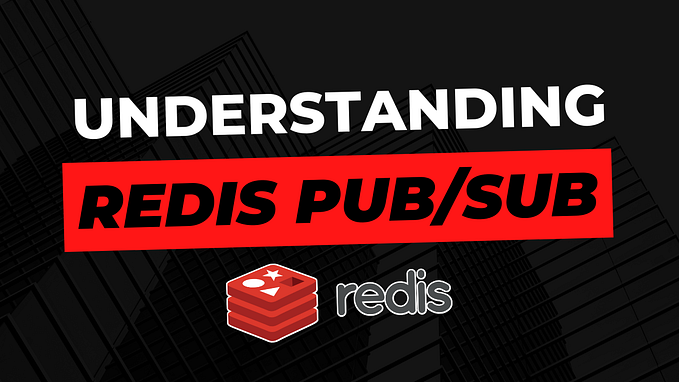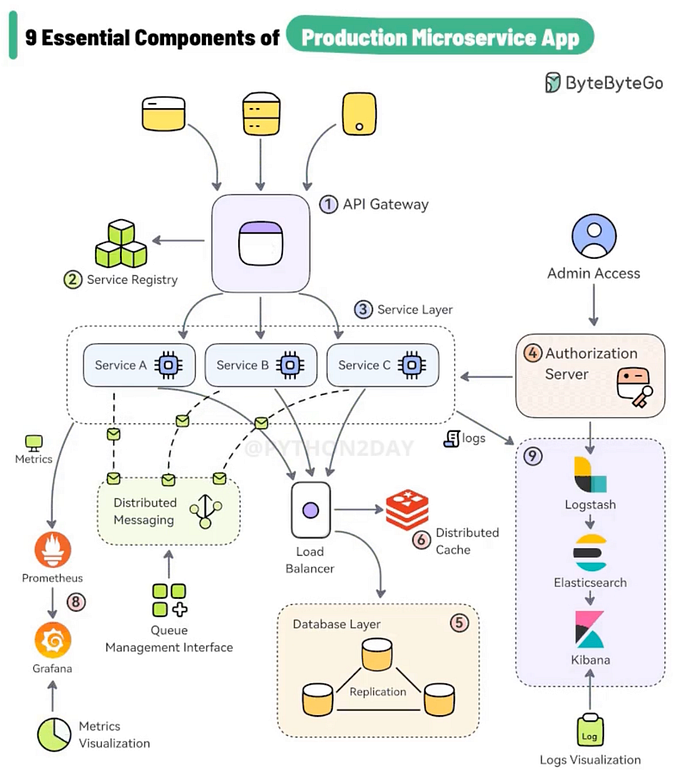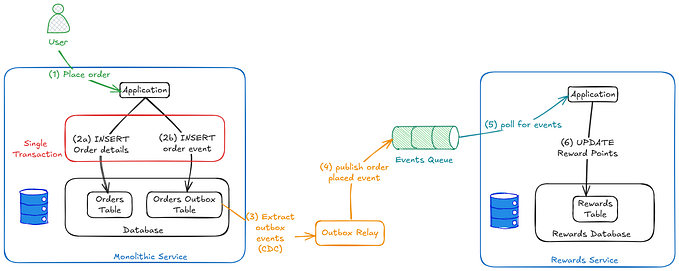The 6 Principles of Microservices Architecture
I recently attended Urs Peter’s course on Event-Driven Architecture, and one of the cool things we dived into right at the start was the six key principles of Microservices architecture.
It’s important to remember that microservices aren’t a magic fix; they won’t solve every issue, and if they are not implemented correctly, they can even bring up some big new challenges. So, today, I’m excited to share with you these six principles of Microservices architecture, which are super important to get right for it to work well.

Isolation
In a microservices architecture, isolation ensures each microservice functions independently with its own codebase, data storage, and runtime environment, preventing process and resource sharing with other services.
One of the key advantages of isolation is that it contains failures within a single service. If one microservice fails, it doesn’t necessarily bring down the entire system, as other services continue to operate independently.
Following this principle means that each microservice owns its data and data model and that no direct database is shared between services. Data sharing, if necessary, is done through well-defined interfaces (APIs).
By isolating your services, typically, they will also run in isolated environments, such as containers, ensuring that issues in one service (like a memory leak) do not affect other services.
However, by isolating our microservices, the overall architecture becomes more complex, with multiple isolated services interacting with each other.
Moreover, managing communication between services, especially in an asynchronous environment, may also be challenging. Multiple databases add complexity to ensuring consistency across different services, especially when handling distributed transactions.
And, naturally, more services mean more deployments, more monitoring, and potentially more points of failure, increasing the overall operational complexity of your system.
In microservices architecture, isolation is all about finding the perfect balance between letting each service do its own thing and making sure they all work well together. The goal is to create a system where each service can stand on its own, handle problems without causing a domino effect, and easily grow as needed. But at the same time, all these services need to work together smoothly as part of a bigger picture. Getting this balance right isn’t just about the technical aspects; it also involves how teams work together and how the whole operation is run.
Autonomy
Each microservice should be autonomous, meaning it makes decisions based on its context without depending on other services. This includes how it processes data, handles business logic, and responds to requests. An autonomous service encapsulates a specific business functionality. It’s responsible for all aspects of that function, from data processing to business rules.
Teams should be able to develop and test their services independently, using tools and languages best suited to the service's functionality. They should own their data and define their data schema. This data is exposed only through APIs, which maintain control over how their data is accessed and used.
Moreover, services should be deployable independently. This means a service can be updated, fixed, or scaled without needing to redeploy the entire application.
These benefits also add overall complexity. While services are independent, they often need to communicate. Managing these communication patterns without creating tight coupling is a challenge.
Besides that, autonomous services can lead to duplication of effort or infrastructure, as each service may require its own support mechanisms like databases, caching, and logging.
Autonomy in microservices is about empowering individual services to operate independently while still contributing effectively to the overall system. It brings significant benefits regarding flexibility, resilience, and development speed. However, it also introduces challenges related to communication, consistency, and potential overhead. Careful design, clear service contracts, and a focus on well-defined boundaries are key to harnessing the full potential of autonomous microservices.
Single Responsibility
The Single Responsibility Principle (SRP) is a guiding concept that dictates each service should be responsible for a single piece of functionality or a single aspect of a system’s business logic.
A microservice following SRP should have one, and only one, reason to change. This means it should focus on a single business capability or function. The service’s responsibilities are well-defined, and it does not overlap with or bleed into the functionalities of other services.
Properly defining what each service should and should not do is crucial. This often involves identifying domain boundaries, which can be guided by practices like Domain-Driven Design (DDD).
However, it's important to notice that while services should be focused, overly granular services can lead to unnecessary complexity. Finding the right balance between service size and responsibility is key.
Exclusive State
Exclusive State emphasizes the importance of each microservice managing its own data independently.
In exclusive state, each microservice owns and controls its own database or state. This means that no other microservice has direct access to this data. This means that each microservice manages its data schema and storage mechanisms, which could differ from those of other services. Data sharing or synchronization between microservices, if necessary, is achieved through API calls, event streaming, or message brokers, maintaining data encapsulation.
By owning its data, each service ensures the integrity and consistency of the data it manages. Besides that, different services can scale their data storage and processing capabilities independently based on their specific requirements. Moreover, with exclusive state, the failure of one service’s data store does not directly impact other services, enhancing the system’s overall resilience.
However, it comes with a price. Transactions and operations that span multiple services become more complex, as they require coordination across independent data stores. Also, managing separate databases or state stores for each service can increase infrastructure complexity and costs.
In a nutshell, Exclusive State ensures that each service is self-contained in terms of its data, contributing to the overall robustness and scalability of the system. However, it introduces challenges in terms of data management, particularly when dealing with operations that span multiple services. Effective implementation of this principle requires thoughtful system design and a clear understanding of the trade-offs involved in managing data within a distributed environment.
Async Message Passing
In asynchronous message passing, a microservice sends a message (a request, data, notification) to another service without waiting for an immediate response. The sending service continues its operation and can handle the response at a later point in time. This often involves an event-driven architecture where services react to events and communicate changes through messages.
Systems implement asynchronous communication using technologies like message queues (e.g., RabbitMQ, Kafka), which temporarily store messages until they are processed by the receiving service. And services notify other parts of the system about changes or updates through events rather than direct calls or requests.
Benefits include services that are not tightly coupled to each other’s processes, leading to a more resilient system architecture. As services don’t wait for responses, they can handle more requests and scale better under load. Also, temporary failures in one service don’t immediately impact others, as messages can be retried or delayed.
However, ensuring reliable delivery and processing of messages can be complex, especially in a distributed system. While decoupling services, asynchronous communication can introduce delays in processing, which might not be suitable for time-sensitive operations. Moreover, tracing a request’s path and debugging issues can be more challenging in an asynchronous setup.
To summarize, Async Message Passing enables microservices to communicate in a decoupled, efficient, and resilient manner, which is particularly beneficial in distributed and scalable systems. However, it introduces complexities in managing and monitoring message flows and requires careful design to ensure consistency and reliability. Embracing this principle often involves a shift towards an event-driven architecture, which brings its considerations in system design and operation.
Location Transparency
In a system with location transparency, microservices are designed and operated without the need for other services to know their specific physical location (IP Address). Services communicate with each other based on logical identifiers rather than physical network addresses. This often involves mechanisms for dynamic service discovery, where services can find and communicate with each other through a registry or directory service, regardless of where they are deployed.
Tools like Kubernetes or service meshes provide a dynamic registry where services register themselves. Other services use this registry to discover and communicate with them. Location transparency allows for intelligent load balancing and rerouting of requests in case of service failures, enhancing the system’s fault tolerance.
This approach allows services to be easily scaled up or down, moved, or replicated across different servers or clusters without impacting the system’s operation. Besides that, services can be deployed on various platforms (on-premises, cloud, hybrid) without affecting their interaction with other services. And the system can automatically handle service failures by rerouting requests to other instances or locations.
Event-Driven MicroServices Training
The “Event-Driven Microservices Training” by Urs Course is open to all interested in enhancing their knowledge of Event-Driven Architecture, and I highly recommend it.
This two-day, in-person course is conducted in the Netherlands. For upcoming dates and pricing details, visit Event-Driven Microservices Training.
Stay Curious!
Contribute
Writing takes time and effort. I love writing and sharing knowledge, but I also have bills to pay. If you like my work, please, consider donating through Buy Me a Coffee: https://www.buymeacoffee.com/RaphaelDeLio
Or by sending me BitCoin: 1HjG7pmghg3Z8RATH4aiUWr156BGafJ6Zw
Follow Me on Social Media
Stay connected and dive deeper into the world of Software Architecture with me! Follow my journey across all major social platforms for exclusive content, tips, and discussions.










